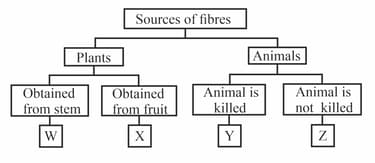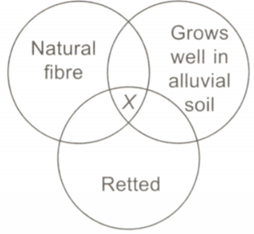Anil Ahlawat Solutions for Chapter: Fibre to Fabric, Exercise 1: EXERCISES
Anil Ahlawat Science Solutions for Exercise - Anil Ahlawat Solutions for Chapter: Fibre to Fabric, Exercise 1: EXERCISES
Attempt the free practice questions on Chapter 2: Fibre to Fabric, Exercise 1: EXERCISES with hints and solutions to strengthen your understanding. NSO Science Olympiad Workbook Grade 6 solutions are prepared by Experienced Embibe Experts.
Questions from Anil Ahlawat Solutions for Chapter: Fibre to Fabric, Exercise 1: EXERCISES with Hints & Solutions
Refer to the given flow chart and select the correct option.

Refer to the given paragraph and select the correct option regarding X, Y and Z. The process of making yarn from fibres is called X. Yarn are used for making fabrics. Two main processes are used to make fabrics from yarn. In process Y two sets of yarn are arranged together to make a fabric while in the process Z single yarn is used to make a piece of fabric.
If P represents the fibre and Q represents the fabric, find out the correct order in which Q is made from P.
Identify X in the given Venn diagram.

The thin strands of _______ that we see, are made up of still thinner strands called ______.
Which of the following is the correct difference between weaving and knitting?
Sakshi wanted to test the quality of her dupatta. She pulled a small strand of yarn from the dupatta and burned it. It smelled like burning paper. She inferred that the dupatta is made of pure _____.
Select the incorrect match.
(i) Cotton – Retting
(ii) Jute – Ginning
(iii) Sliver – Combing
(iv) Spinning – Takli
(v) Knitting – Loom
(vi) Weaving – Charkha
